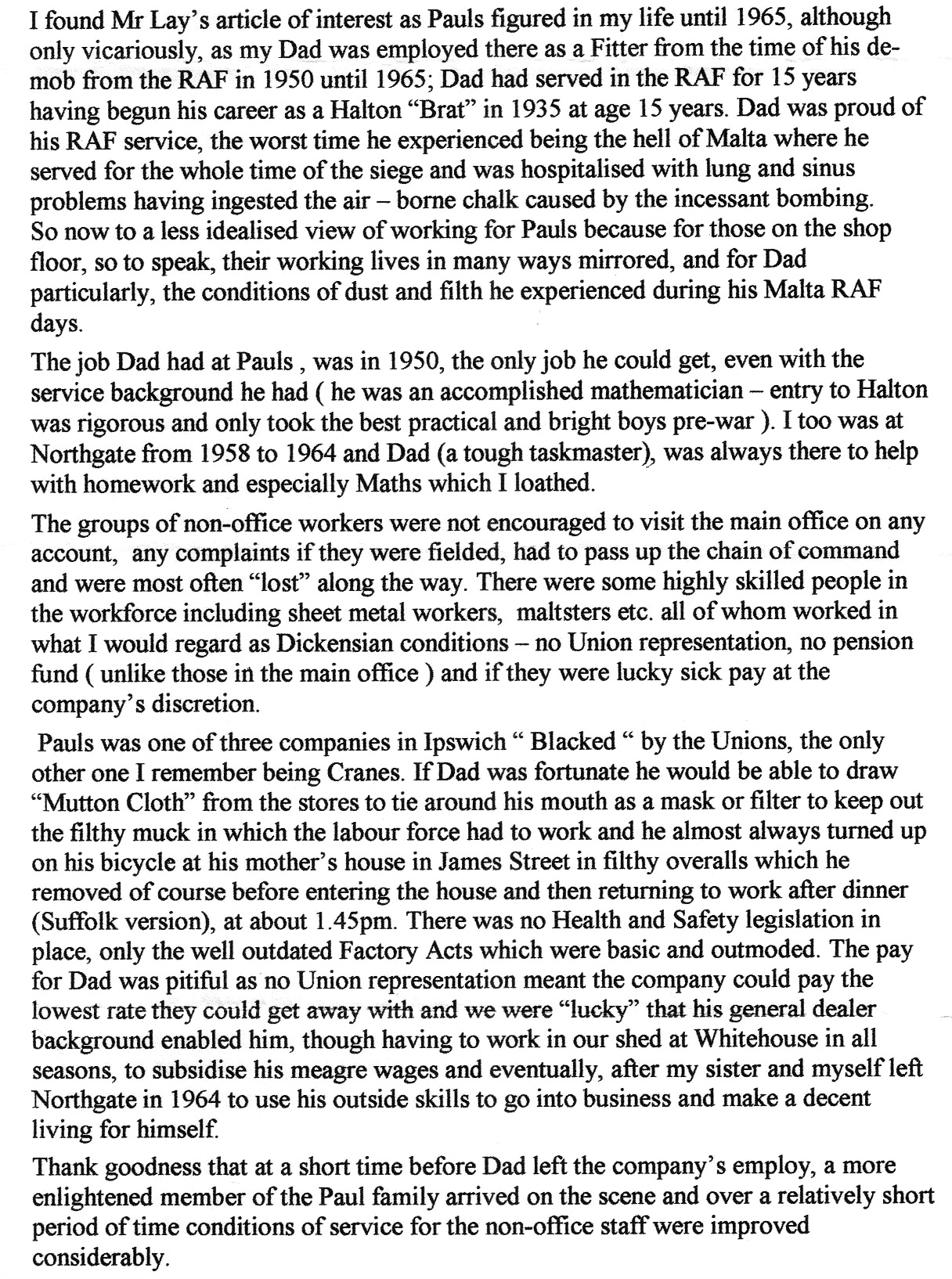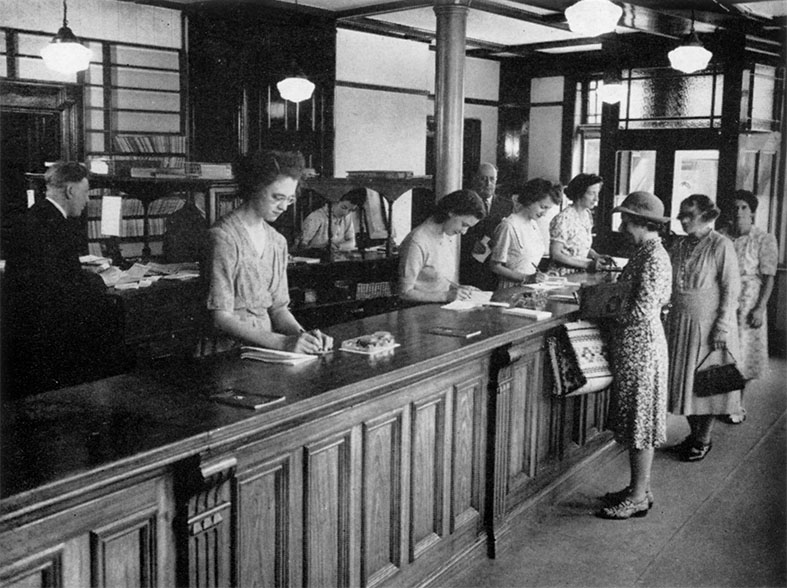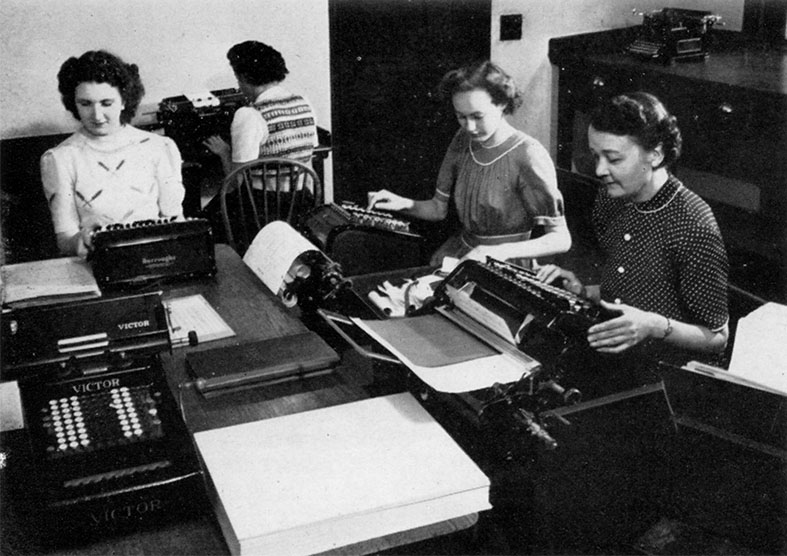- Screen Colours:
- Normal
- Black & Yellow
A positive step forward in the renaissance of Suffolk’s ‘New Brighton’ from Graham Day
I was pleased to see that, just before Christmas 2021, it was announced that it is anticipated that once the pandemic permits, work will start on the redevelopment of the former HMS Naval Training establishment (HMS Ganges) at Shotley ‘Suffolk’s New Brighton’.
The final reserved matters under the planning permission have now, apparently, been satisfactorily concluded by the planning officers, and it is hoped that the redevelopment to provide 285 homes, a sports park, shops and medical facilities will commence in the very near future.
The Ganges training establishment was opened in 1904, finally closing in 1976. My first and only visit took place with a youth group in 1972; the naval cadet who showed us round memorably explained that he had joined the Navy to see the world and importantly, to improve his social opportunities with young ladies. Unfortunately, as far as he was concerned, neither of those important things had happened.
The iconic training mast on the site was in situ for many years after closure; when I was growing up I marvelled at the skill of the recruits to climb the rigging on the mast during displays on the parade ground. I looked on with incredulity when probably the smallest and lightest recruit became the “ button boy”, standing as I thought perilously on the small ‘button’ platform of the masts top. A triumph of discipline over fear. Never for me, I thought. However, the mast was sometimes climbed by those who were not in the Navy. In his book The life and times of Southwold’s Town Crier Mr John Barber recounted an occasion when he went, as an active RNLI crew man, on a radio/wireless communication course at HMS Ganges. Somehow, they obtained permission to climb the mast, and once they had fitted the correct shoes they attempted to climb it, one man getting close to the top which was ‘a heck of an achievement given his age’.
The mast was the most iconic symbol of HMS Ganges, and recognised around the world. However, in 1995 whilst working in Surrey, by chance I found the mast of a former HMS Ganges behind Guildford Cathedral. It had been formed in the shape of a cross, and erected on the prominent hill where the splendid Art Deco cathedral was built in the 1930s. Mast symbolism indeed.
Over the years since closure, the site has seen many proposals for development, including in the 1970s a suggestion that it could be used as a training school for foreign paratroopers. However, finally it looks as though the dereliction and decay is finally going to be replaced by a project which will breathe more life into Shotley. Hopefully also, some better premises will be found for the excellent HMS Ganges Museum where the existing comprehensive collection of memorabilia and artefacts will be able to be more effectively displayed, thereby making them more accessible. The Museum deserves this.
With the completion of the restoration of Shotley Pier, and the redevelopment of the Ganges site, Suffolk’s ‘New Brighton’ will become even more of a destination in the future. A real renaissance indeed.
My father’s time at Pauls from Tony Grayston (re: Derek Lay’s article in the January issue)

R&W Paul’s ’Kositos’ from David J. Norman
I read the article [Issue 228] by Derek Lay about his time at R.&W. Paul with interest. I wondered about how the term ‘KOSITOS’ originated. As a very young boy my family used to visit my maternal grandparents who owned a farm in Mendham, Suffolk during the 1960s. They had a herd of cows who used to consume Kositos. I used to enjoy eating it as well. Older, ‘wiser’ relatives advised me that rats could have been around the Kositos before me. I have suffered no ill effects from the experience during the intervening years.
Ipswich Museum and the new funding from David Jones
I wonder what the Ipswich Society’s thinking is on the proposed alterations to the interior of the High Street Museum as depicted in the Ipswich Star? I have a particular interest in the museum because I worked as Keeper of Human History there for 38 years and have written a detailed history of its development in manuscript. The Museum is a listed Grade II* building and therefore its interior is protected.
As you probably know the Main Hall of the Museum was built to accommodate the displays of the previous 1848 Museum Street building and re-used the existing showcases from the old (Arlingtons) museum moving them with original displays into position, including all the balcony showcases. Thus the displays are older than the building and represent the original display scheme of the Reverend Professor Henslow who, together with the eighty leading natural scientists of the day, created the original museum which represents the breakthrough in Victorian natural science which culminated with Charles Darwin.
For those of you who are less familiar with the Professor’s story he was Darwin’s mentor, the man who got him his place on HMS Beagle, who collected and sorted Darwin’s specimens as they arrived in England and who supported him through the controversies which followed. It was Henslow who chaired the famous Oxford ‘monkey’ debate. In that debate the speaker for Darwin was T.H. Huxley. Henslow had got Huxley his place on his first scientific expedition on board HMS Rattlesnake. This display and its underlying principals represented the peak of museum planning at the time and is connected to the complex struggle which led to the creation of the South Kensington Natural History Museum. They were opened by the British Association for the Advancement of Science by Prince Albert at the meeting which planned the Great Exhibition.
The Main Hall is a clear example of one of the triad of unique Victorian buildings, the railway station, the department store and the museum, all dependant on the same building technology of cast iron and plate glass. It is a clear illustration of Henslow's theories and his great drive towards making science education available to all.
The Hall is not completely unchanged. Between 1904-7 the Curator Woolnough, alongside the President of the Museum, E. Ray Lankester, Director of the Natural History museum – also a friend of H.G.Wells and Karl Marx and depicted by Conan Doyle as Professor Challenger – added the gorillas, the rhino, the giraffe and some other larger mammals; he also repaired the African case.
After that however the displays, remain unchanged until 1989-1990, when the front half of the Main Hall was remodelled. Many of the specimens which had been displayed together in the Main Hall of the old museum and later in High Street are still on display elsewhere in the museum or are currently in store. Some of the Victorian showcases have also been moved around the buildings. As well as the original voucher specimens of the museum much of the original scientific and early educational equipment used by Henslow and other early curators and even early office equipment are preserved. The remarkable series of eighty portraits of the original members of he museum and of its early presidents and patrons are dispersed through the galleries and stores.
There are two clear options for the display of the Main Hall. The first is to actually go with its unique story, that of Henslow, Victorian natural science and the history of a museum, to highlight its Victorian features, and communicate the story using a combination of modern display and the existing period displays. It is true that the whole gallery is not Victorian. This allows the remaining half to interpret the whole story in an engaging and contemporary fashion.
The alternative is to ‘modernise’ and hide its Victorian aspect beneath an attempt to create a white box and the display approach of a modern art gallery; that is, to make it as far as possible resemble all contemporary museums everywhere else, which is what the illustrations of the Ipswich Star depict. I have always thought that Ipswich Museum is a priceless, unique historical artefact in its own right.
These remarks apply particularly to the Main Hall. With the exception of The Bass Rock and the ichthyosaur, the rest of the museum has been changed many times and the specimens can obviously be displayed to much better effect than at present; in 1881 these other spaces were used as the Library and the School of Art and Science, anyway. Museums have to change and evolve but they, perhaps more than any other institutions, should be about taking heritage, history and tradition forward into the modern world.
The museum has signally failed to promote its own history, the importance of the researchers associated with it, the richness and diversity of its collections. The second President (Henslow’s) contribution I have given above and I have also touched on the career of E. Ray Lankester.
1.Which Nobel Prize winning scientist was a President of Ipswich Museum? 2.Which leading woman war artist was President? 3. Which founder of a major industry was President? 4. Which famous collector of French art and founder of a major London Museum was President? 5. Which pioneer woman archaeologist was closely associated with the museum?* You will not find the answers in the displays of the museum at present. Will they be there in the future?
[*Answers at the foot of this web-page -Ed.]
Because of its distinctive and very long history, its status as the first museum financed by local government and, because of the history of Ipswich itself, the Ipswich Museum collections are truly outstanding. Because of a long period of decay and poor documentation, the importance of its collections have fallen from public awareness. With little accessible documentation and much research on the collections to be done, even incoming management has had a hard job to reconstruct the knowledge base on which display of the collections must be built. Colchester & Ipswich Museums Service has triumphantly acquired the capital and has developed knowledge of the collections to a level very much better than the largely disorganised situation which I found in 1974. It will shine if it plays to its own strengths and allows the new displays to showcase as much as possible of the range and quality of the collection.
John Norman, Chair of The Ipswich Society writes:
Ipswich Borough Council and their team of architects and advisors are to be congratulated on winning a substantial Lottery grant, a sum which will make substantial changes to Ipswich Museum possible and worthwhile. Winning National Lottery Heritage funding (£4.3 million) is not easy, evidenced not only by the failed first attempt at the Museum but by the relatively low number of funding awards made to this part of the country. Quite rightly the lottery trustees require a return on their investment, not necessarily a financial return but an increase in the percentage of the population making use of the facility once the improvements are complete. It is notoriously difficult to attract visitors into provincial museums, particularly those that are dark, staid and hold little interest to children, the proposals at Ipswich are planned to lift the museum into a different league.
Important inclusions in the proposed changes include making all of the ground floor rooms publicly accessible space, creating a level floor throughout to make it much easier for all visitors to wander, unhindered by steps or ramps and converting basement storerooms into spacious toilets. There will also be a café, an education space (enabling the museum to be used by school children on a wet February afternoon) and a new conservation laboratory, enabling visitors to see the fascinating work being carried out.
Our congratulations to the museum staff, volunteers and The Friends of the Ipswich Museums who have all contributed to this wonderful development opportunity.
Early days of a Building Society from Margaret Hancock (Archivist, Suffolk Building Society*)
(Archivist, Suffolk Building Society*)
As Corporate members of the Ipswich Society, we were interested to read Derek Lay’s article in the last newsletter about his employment at R W Paul Ltd in the 1950’s. His recollection of pushing a trolley laden with printed leaflets from Key Street to the Post Office Sorting Office is one example of the complete transformation of office work within living memory. It reminded us of another change in practices that even came as a surprise to expert archivists at Suffolk Record Office when our extensive business archive was placed on permanent loan some years ago.
Retained amongst our collection of minute books, cash books and other handwritten ledgers is a rather insignificant looking notebook. This contains lists of members passbooks despatched and received at Head Office in Ipswich between 1959 and 1963 from the Society’s network of agents. In those pre-computer days passbooks had to be manually updated annually with interest earned on savings or due on mortgage accounts. Staff needed to work overtime for around three months at the end of each financial year to complete the work.
What is even more remarkable is the method used to transfer these passbooks from numerous agents across Suffolk, North Essex and Norwich. A now retired staff member recalls walking across to the office at Old Cattle Market bus depot to deposit and collect envelopes full of passbooks for transportation via the local bus network.
All sorts of parcels were delivered in this way; a town centre fishmonger regularly sent fresh fish to the cook at Kesgrave Hall with her young son sent to collect if from the conductor as the bus travelled along the main road to Woodbridge!
The development of branch offices across Suffolk (beginning in 1979 at Hadleigh) has removed the Society’s need for a large network of agent – thankfully before the demise of bus conductors and reduction in local bus services!
[*The new name for Ipswich Building Society. ‘Providing a safe home for savers and safe homes for our communities since 1849. Our new name is inclusive, connecting to a broader community – and it’s an old name to stay true to our roots.’]
Archive photographs of the building society (courtesy Suffolk Building Society)


Answers to David Jones’ questions in his letter 'Ipswich Museum and the new funding' (above). 1. Sir Charles Sherrington (1944–1952). 2. Anna Airy (1882-1964). 3. Edward Packard senr. (1895-1899) founder of the artificial fertilizer industry. 4. Sir Richard Wallace, Bt of Sudbourne Hall (1874–1890). 5. Nina Frances Layard (1853-1935).